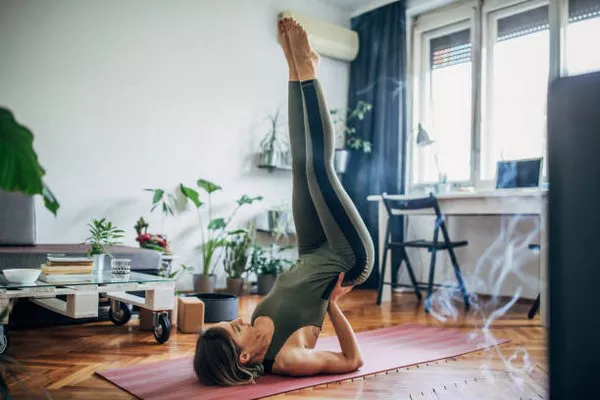Urinary incontinence, a condition affecting many individuals, particularly as they age, can be managed through various methods. Recent research published in the Annals of Internal Medicine suggests that regular yoga and low-impact exercises can be as effective as medication in controlling this condition.
Study Findings
The study explored the impact of two different exercise programs on urinary incontinence. Participants, all of whom had urinary incontinence, were divided into two groups:
Yoga Group: This group attended regular yoga classes focused on pelvic floor strength. They participated in two 90-minute sessions per week and were also encouraged to practice yoga independently for an additional hour each week.
Control Group: Participants in this group engaged in a physical conditioning class that involved nonspecific stretching and strengthening exercises, with the same frequency and duration as the yoga group.
After 12 weeks, both groups showed significant improvements:
Yoga Group: Reported about a 65% reduction in episodes of incontinence.
Control Group: Experienced similar benefits, suggesting that low-impact exercise in general could be effective.
Why Yoga Helps
Yoga’s effectiveness in managing urinary incontinence is attributed to several factors:
Pelvic Floor Strength: Yoga poses can strengthen the pelvic floor muscles, which support the bladder and improve bladder control.
Flexibility and Coordination: Enhances muscle flexibility and coordination, which are crucial for maintaining proper bladder function.
Reduced Inflammation: Yoga’s calming effect can help reduce stress and anxiety, which are often linked to urinary incontinence.
Dr. Alison Huang, the lead study author, emphasized that urinary incontinence is often related to multiple factors beyond bladder issues, including physical conditioning and mental health. Yoga addresses these factors simultaneously, making it a holistic approach to managing the condition.
Expert Opinions
Ashley Rawlins, a pelvic floor physical therapist, supports yoga for its ability to improve pelvic floor health through increased muscle strength and flexibility. She highlights yoga as a low-impact exercise that avoids the challenges associated with high-impact activities.
G. Thomas Ruiz, an ob-gyn, notes that yoga-specific exercises taught by pelvic floor therapists can be particularly beneficial and should be considered as part of a comprehensive treatment plan.
Additional Recommendations
While yoga is beneficial, it is not the only strategy for managing urinary incontinence:
Maintain a Healthy Weight: Excess weight can exacerbate urinary incontinence.
Avoid Constipation: Straining during bowel movements can worsen incontinence.
Perform Pelvic Floor Exercises: Kegel exercises can strengthen pelvic muscles.
Consider Medications and Other Therapies: In more severe cases, medications, Botox injections, or surgery might be necessary.
Dr. Huang also suggests evaluating the impact of any current medications, as some might contribute to bladder issues. Reducing the intake of caffeinated drinks can also help manage symptoms.
Conclusion
Incorporating yoga and other low-impact exercises into your routine can offer significant benefits for managing urinary incontinence. These practices not only help strengthen the pelvic floor but also improve overall physical and mental well-being. If you struggle with urinary incontinence, consult with your doctor to explore all treatment options and find a plan that works best for you.


